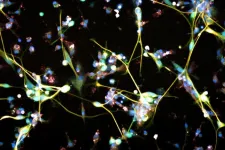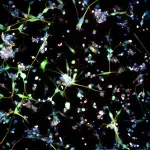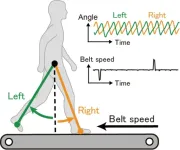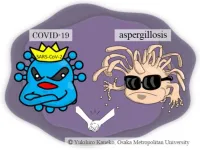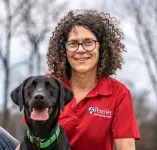(Press-News.org)
Key points:
Glioblastoma is an incurable and fatal type of brain cancer.
In a large-scale drug screening, the antidepressant, vortioxetine emerged as one of the most effective agents against these types of cancer cells.
Clinical trials are already in the planning phase at the University Hospital Zurich.
Glioblastoma is a particularly aggressive brain tumour that at present is incurable. Cancer doctors can extend patients’ life expectancy through operations, radiation, chemotherapy or surgical interventions. Nevertheless, half of patients die within twelve months of diagnosis.
Drugs that are effective against brain tumours are difficult to find, as many cancer drugs often can’t cross the blood-brain barrier to reach the brain. This limits the choice of possible treatments. Neuro-oncologists have thus been searching intensively for some time to find better drugs that can reach the brain and eliminate the tumour.
Researchers led by ETH Zurich Professor Berend Snijder have now found a substance that effectively combats glioblastomas, at least in the laboratory: an antidepressant called vortioxetine. Scientists know that this inexpensive drug, which has already been approved by agencies such as the FDA in the U.S. and Swissmedic, is capable of crossing the blood-brain barrier.
Snijder’s postdoc and lead author of the study, Sohyon Lee found it using pharmacoscopy, a special screening platform that the researchers have developed at ETH Zurich over the past years. The study findings were recently published in the journal Nature Medicine. In this study, the ETH Zurich researchers worked closely with colleagues from various hospitals, in particular with the group under neurologists Michael Weller and Tobias Weiss at the University Hospital Zurich (USZ).
Testing hundreds of substances simultaneously
With pharmacoscopy, ETH Zurich researchers can simultaneously test hundreds of active substances on living cells from human cancer tissue. Their study focused primarily on neuroactive substances that cross the blood-brain barrier, such as antidepressants, Parkinson’s medication and antipsychotics. In total, the research team tested up to 130 different agents on tumour tissue from 40 patients.
To determine which substances, have an effect on the cancer cells, the researchers used imaging techniques and computer analysis. Previously, Snijder and his team had used the pharmacoscopy platform only to analyse blood cancer (see ETH News) and derived treatment options from this. Glioblastomas are the first solid tumours that they have systematically investigated using this method with a view to use existing drugs for new purposes.
For the screening, Lee analysed fresh cancer tissue from patients who had recently undergone surgery at the University Hospital Zurich. The ETH Zurich researchers then processed this tissue in the laboratory and screened it on the pharmacoscopy platform. Two days later, the researchers obtained results showing which agents worked on the cancer cells and which did not.
Antidepressants surprisingly effective
The results made it clear that some, but not all, of the antidepressants tested were unexpectedly effective against the tumour cells. These drugs worked particularly well when they quickly triggered a signalling cascade, which is important for neuronal progenitor cells, but also suppresses cell division. Vortioxetine proved to be the most effective antidepressant.
The ETH Zurich researchers also used a computer model to test over a million substances for their effectiveness against glioblastomas. They discovered that the joint signalling cascade of neurons and cancer cells plays a decisive role and explains why some neuroactive drugs work while others don’t.
In the last step, researchers at the University Hospital Zurich tested vortioxetine on mice with a glioblastoma. The drug also showed good efficacy in these trials, especially in combination with the current standard treatment.
The group of ETH Zurich and USZ researchers is now preparing two clinical trials. In one, glioblastoma patients will be treated with vortioxetine in addition to standard treatment (surgery, chemotherapy, radiation). In the other, patients will receive a personalised drug selection, which the researchers will determine for each individual using the pharmacoscopy platform.
Drug widely available and inexpensive
“The advantage of vortioxetine is that it is safe and very cost-effective,” says Michael Weller, Professor at the University Hospital Zurich, Director of the Department of Neurology and coauthor of the study published in Nature Medicine. “As the drug has already been approved, it doesn’t have to undergo a complex approval procedure and could soon supplement the standard therapy for this deadly brain tumour.” He hopes that oncologists will be able to use it soon.
However, he cautions patients and their relatives against obtaining vortioxetine themselves and taking it without medical supervision. “We don’t yet know whether the drug works in humans and what dose is required to combat the tumour, which is why clinical trials are necessary. Self-medicating would be an incalculable risk.”
Snijder, too, warns against rushing to use the antidepressant on glioblastomas: “So far, it’s only been proven effective in cell cultures and in mice.”
Nevertheless, he believes that this study has achieved an ideal result: “We started with this terrible tumour and found existing drugs that fight against it. We show how and why they work, and soon we’ll be able to test them on patients.” Should vortioxetine prove effective, this will be the first time in recent decades that an active substance has been found to improve the treatment of glioblastoma.
END
The European Union aims to be carbon-neutral by 2050 as part of the comprehensive Green Deal that was agreed upon four years ago. However, an analysis of the policy documents outlining the practical measures of the Green Deal shows that it will decrease carbon emissions in Europe, but also increase carbon emissions outside of the EU. This increase is more than double the amount of carbon emissions saved by the Green Deal. This analysis was published in Nature Sustainability on <DATE> by an international team of scientists led by Klaus Hubacek, Professor of Science, Technology and Society ...
Osaka, Japan – Walking is an activity that is often taken for granted. Most people usually think they can multitask by “walking and chewing gum” simultaneously with hardly any taxation of their mental effort. Indeed, each leg can move rhythmically independently of the other, controlled by its side of the spinal cord. However, the ability of the human brain to coordinate the gait so that a walker’s legs are half a stride out of phase with each other, called the “antiphase relationship,” is not so trivial when an obstacle or asymmetry occurs, such as a curve in the path. A better understanding of how a normal walking cadence is maintained ...
A new type of blood test using lipids could make it easier to identify children at risk of complications around obesity including type two diabetes, liver and heart disease, say scientists.
A new study from King’s College London published in Nature Medicine reveals a new relationship between lipids and diseases impacting metabolism in children, which could serve as an early warning system for conditions like liver disease.
Using machines that test blood plasma in babies that already exist in hospitals, the researchers suggest this ...
Iron is a micronutrient indispensable for life, enabling processes such as respiration, photosynthesis, and DNA synthesis. Iron availability is often a limiting resource in today’s oceans, which means that increasing the flow of iron into them can increase the amount of carbon fixed by phytoplankton, with consequences for the global climate.
Iron ends up in oceans and terrestrial ecosystems through rivers, melting glaciers, hydrothermal activity, and especially wind. But not all its chemical forms are ‘bioreactive’, that is, available for organisms ...
As society learns to live with COVID-19, research on the disease and its complications remains important. Thus, an Osaka Metropolitan University team has pored through data to understand the incidence in Japan of COVID-19-associated pulmonary aspergillosis (CAPA), a severe invasive fungal infection of the lungs.
Few studies have been conducted on CAPA in Japan, but reports from overseas put the incidence between 3.8% and 35%.
Using Japanese administrative claims data, Graduate School of Medicine Lecturer Waki Imoto, graduate student Mr. Yasutaka Ihara, Professor Ayumi Shintani, ...
FOR MORE INFORMATION
Michael San Filippo
Senior Media Relations Manager
American Veterinary Medical Association
Cell/Text: 847-732-6194
msanfilippo@avma.org
Cooler heads prevail: New research reveals best way to prevent dogs from overheating
(SCHAUMBURG, Illinois) September 19, 2024— As temperatures continue to soar across the country, a simple yet innovative technique could be the key to keeping dogs safe from heat-related illnesses.
New research published in the Journal of the American Veterinary Medical Association (JAVMA) reveals that teaching dogs ...
RIVERSIDE, Calif. -- Nearly 6,000 opioid-related overdose deaths occurred in California in 2021, many due to fentanyl, a synthetic opioid. To address the crisis, a team of researchers in the School of Medicine, or SOM, at the University of California, Riverside, plans to develop and implement a curriculum that offers education on substance use disorders to medical students early and throughout their education.
To facilitate the development of the curriculum, the team has been awarded a grant of $900,000 from the Substance Abuse ...
Fussy eating is mainly influenced by genes and is a stable trait lasting from toddlerhood to early adolescence, finds a new study led by researchers from UCL (University College London), King’s College London and the University of Leeds.
The study, published in the Journal of Child Psychology & Psychiatry and funded by the UK mental health charity MQ Mental Health Research, compared survey results of parents with identical or non-identical twins in England and Wales from the ages of 16 months to 13 years.
The ...
Isis: A Journal of the History of Science Society is widely recognized as a leading voice in the history of science. George Sarton founded the journal in 1912, and two years later the History of Science Society (HSS) was formed to advance the journal’s mission and centralize the nascent discipline. The September 2024 issue of Isis pays tribute to the centennial anniversary of the HSS with a collection of articles that delve into the rich history of the society and its publications.
In their introduction to the issue, editors Alexandra Hui and Matthew Lavine write that the issue can be seen as “a love letter of sorts: to the Isis readership, ...
A pioneering study presented today at ECTRIMS 2024 has identified critical biomarkers that can predict disability worsening in multiple sclerosis (MS). The breakthrough research has the potential to transform treatment strategies for millions of MS patients worldwide, paving the way for more personalised and effective treatment plans.1
In this multicentre observational study, conducted across 13 hospitals in Spain and Italy, Dr. Enric Monreal and his team found that elevated serum neurofilament light chain (sNfL) levels—a protein indicating nerve cell damage—at the onset of MS can predict both relapse-associated worsening (RAW) and progression independent ...
